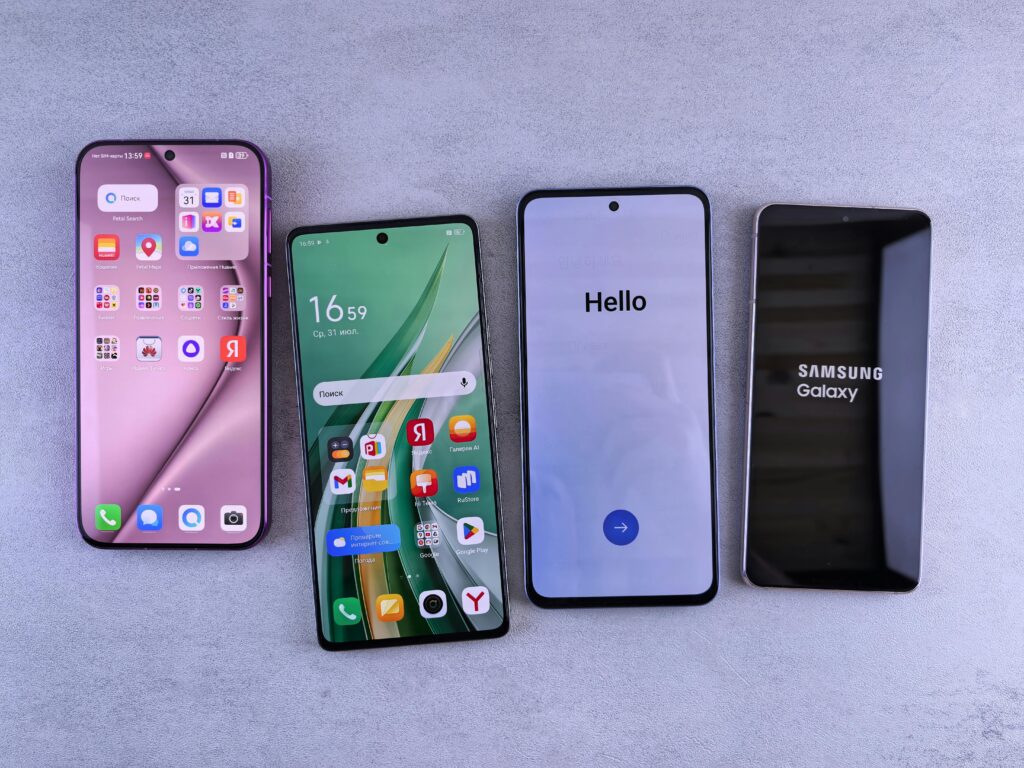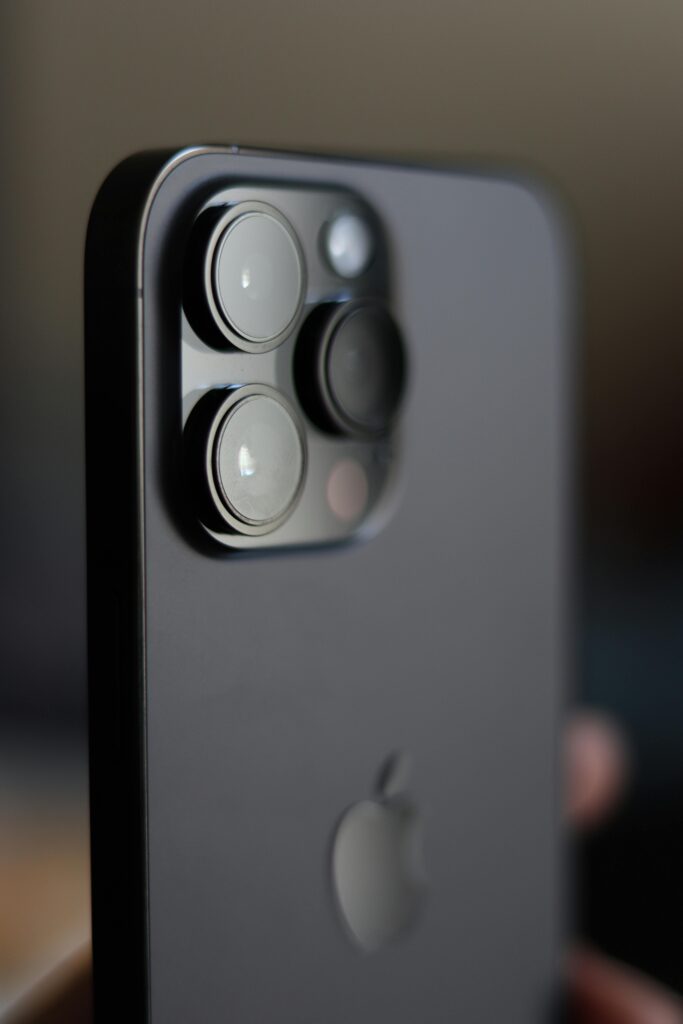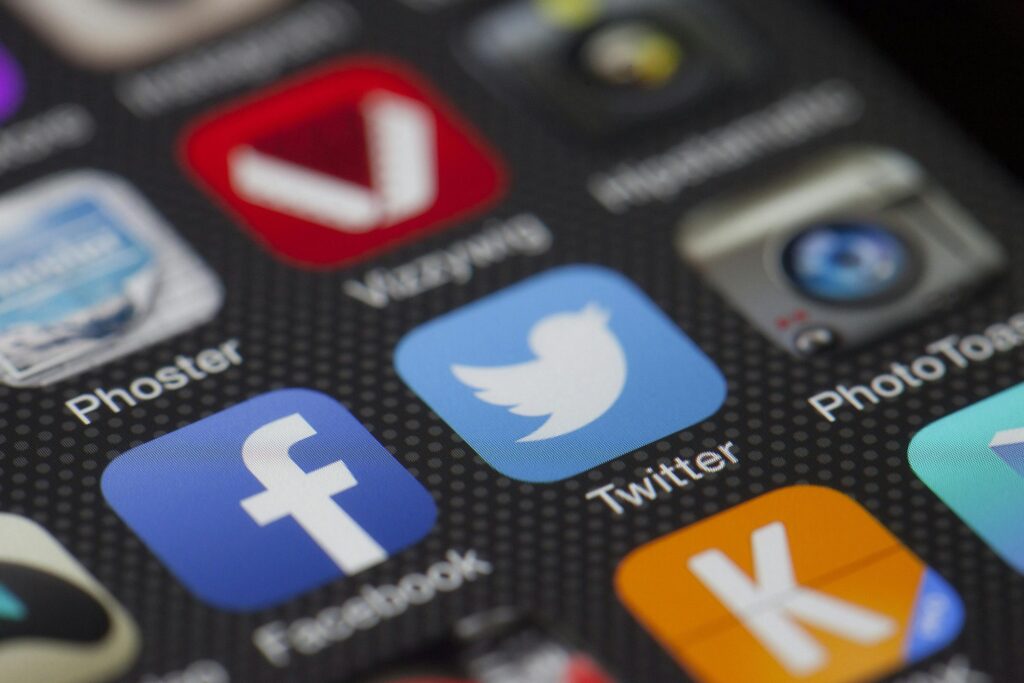Introduction
In today’s technology-driven world, the choice between iPhone and Android smartphones often represents a significant decision for consumers. As mobile devices have become integral to daily life, determining which smartphone offers the best experience can be challenging. Personal preferences, brand loyalty, and individual feature needs play crucial roles in shaping this choice. Both iPhone and Android have cultivated dedicated user bases, each advocating for their preferred operating systems based on varied functionality and design aesthetics.

The significance of selecting the right smartphone goes beyond merely choosing a device; it encompasses considerations of performance, user interface, and usability. Factors such as the seamless integration of software and hardware, responsiveness of applications, and overall efficiency contribute to the user experience. Additionally, design elements, including aesthetics, ergonomics, and build quality cannot be overlooked, as they significantly impact user satisfaction. While the iPhone often emphasizes a uniform design and ecosystem, Android devices offer a diverse range of styles and functionalities, making this comparison more multifaceted.
Moreover, software ecosystems play a vital role; Apple’s iOS focuses on stability and user friendliness, while Android provides greater customization and flexibility options. Camera capabilities have also become a pivotal point of comparison, with both platforms striving to enhance photographic experiences through innovative technology. Furthermore, considerations surrounding battery life and security measures have become increasingly important, as users seek devices that not only perform well but protect their data effectively.
Lastly, price remains a decisive factor in the smartphone landscape. The cost of ownership varies significantly between iPhone and Android devices, leading consumers to weigh their options carefully against their budget constraints. The subsequent sections will delve deeper into each aspect, providing a comprehensive comparison to assist potential buyers in making informed choices aligned with their unique needs and preferences.
Performance and Hardware
When comparing the performance and hardware of iPhone and Android devices, a detailed examination of their specifications is essential. The heart of any smartphone lies within its processor, which serves as the engine driving its operations. Apple’s iPhones are powered by their proprietary A-series chips, known for their exceptional speed and efficiency. For instance, as of 2023, the A16 Bionic chip provides remarkable performance, enabling seamless multitasking and fluid user experiences.
In contrast, Android devices utilize a variety of processors from manufacturers such as Qualcomm, Samsung, and MediaTek. While Qualcomm’s Snapdragon series is commonly found in leading Android models, the performance can differ widely across devices due to variations in chipset architecture, thermal management, and software optimization. High-end Android smartphones typically exhibit commendable speed, but budget-friendly variants may not deliver similar performance levels.
RAM is another crucial element in the debate between iPhone and Android. iPhones generally offer 4GB to 6GB of RAM, utilizing efficient memory management systems to enhance performance. On the Android side, devices commonly feature 8GB or more, making them appear superior on paper. However, the real-world performance often suggests that Apple’s optimized hardware and software integration allows for effective multitasking even with lower RAM capacities.
Storage options also present a stark contrast. iPhones provide fixed storage capacities, ranging from 64GB to 1TB, without the option for expandable memory. Android devices, however, frequently offer expandable storage via microSD cards, giving users the flexibility to increase their device’s storage as needed.
Overall, the combination of processor capabilities, RAM management, and storage options significantly affects the user experience on both platforms. The highest-performing devices in each ecosystem exhibit impressive speed and functionality, making the decision between an iPhone and an Android largely dependent on individual preferences and usage scenarios.
Design and Build Quality
The design and build quality of smartphones significantly influence consumer preferences and overall user experience. When comparing iPhone and Android devices, distinct design philosophies emerge that reflect the identity of each platform. Apple’s iPhone prioritizes a minimalist aesthetic with an emphasis on elegance and sophistication. The use of premium materials such as surgical-grade stainless steel and durable glass enhances its visual appeal and tactile experience. In contrast, the Android market offers a broader array of designs, as numerous manufacturers contribute to the ecosystem. This results in a diverse range of materials, from plastic to aluminum and glass, catering to various price points and aesthetic preferences.

From an ergonomic standpoint, iPhones are commonly designed to be user-friendly, with rounded edges and tailored dimensions that fit comfortably in the hand. This focus on user comfort is evident in the consistent approach Apple adopts with its products. Meanwhile, Android devices come in various forms, with manufacturers exploring different sizes and shapes. Some models emphasize larger displays for media consumption, while others maintain a compact design for ease of use, appealing to a wider demographic.
Color options also differ significantly between the two platforms. Apple typically offers a limited range of sophisticated colors, maintaining a luxurious branding image. Conversely, Android manufacturers frequently release devices in a spectrum of vibrant and varied colors, providing consumers with more personalization options. The impact of design extends beyond mere aesthetics; it plays a vital role in functionality and user experience. An intuitive layout can enhance accessibility and streamline interactions, while an aesthetically pleasing device can boost user satisfaction. Ultimately, while both iPhone and Android devices present unique design attributes, the choice largely depends on individual preference regarding materials, aesthetics, ergonomics, and available options.
Operating System and User Interface
The operating system is one of the most critical components that differentiate the iPhone from Android devices. The iPhone runs on Apple’s iOS, renowned for its streamlined user experience and cohesive interface design. In contrast, Android operates on a variety of platforms developed by numerous manufacturers, providing a more diverse yet sometimes fragmented experience. This section aims to explore these differences in detail.
When it comes to user interface (UI) design, iOS is often praised for its intuitive layout, which emphasizes simplicity and ease of navigation. Icons on the home screen are arranged in a grid, with a clean design that enhances usability. iOS updates are typically released simultaneously across all compatible devices, ensuring that users benefit from the latest features and security enhancements promptly. On the other hand, the Android UI varies widely depending on the manufacturer and the specific version being used, which can result in a wide array of experiences. Custom skins, such as Samsung’s One UI and Google’s Pixel UI, may offer different aesthetics and functionalities.
Customization is another aspect where Android excels. While iOS allows limited customization options, Android users can tailor their devices extensively, from altering home screens with widgets to installing third-party launchers. This level of personalization appeals to those who wish to create a unique user experience. However, the flexibility of Android also comes with increased complexity, which may overwhelm some users, particularly those less tech-savvy.
Support and updates also present a significant difference between the two operating systems. iOS devices generally receive longer software support lifespans, with updates available for several years after the device’s release. Conversely, the update frequency and duration on Android devices can vary. Often, less popular devices may not receive timely updates, which can lead to fragmented user experiences over time. This disparity influences the long-term usability of devices across both platforms.
Camera Features and Quality
The camera system is often a significant factor for consumers when choosing between iPhone and Android smartphones. Both platforms offer a range of models featuring diverse camera specifications, yet their approaches vary considerably in terms of hardware and software integration. iPhones are known for their reliable camera performance, providing consistent image quality across various lighting conditions. For instance, the incorporation of advanced image stabilization and optimized optics results in sharp and clear images, particularly beneficial for users capturing fast-moving subjects.

On the other hand, Android devices come equipped with various camera configurations. Manufacturers such as Samsung, Google, and OnePlus frequently innovate with multi-lens systems, larger sensors, and advanced features, including night modes and specialized lenses for ultra-wide or macro photography. Consequently, low light performance can be exceptional with specific high-end Android models, allowing users to capture stunning images in less than ideal conditions.
Software capabilities also play a crucial role in the overall camera experience. iPhones boast a user-friendly interface with built-in photo editing tools that enhance image quality and allow for easy sharing. The seamless integration of software and hardware ensures that consumers can achieve professional results without extensive knowledge of photography. Conversely, many Android smartphones offer customizable camera settings, granting enthusiasts the flexibility to adjust exposure, ISO, and other parameters to achieve their desired effects.
Consumer preferences regarding camera performance can heavily influence purchasing decisions, leading many users to rely on hands-on experiences or image comparisons before making a choice. While some may prioritize the brand’s reputation for camera quality, others may opt for the versatility that comes with the varied Android ecosystem. Ultimately, both platforms provide robust options for mobile photography, catering to different user requirements and preferences in the market.
Battery Life and Charging
The comparison between iPhone and Android devices regarding battery life and charging capabilities presents a multifaceted perspective on performance. When assessing battery capacity, Android devices often boast larger batteries, with many models exceeding 4,000 mAh. In contrast, iPhones generally feature smaller battery capacities, with recent models typically in the range of 2,500 to 3,600 mAh. However, Apple’s optimization of its hardware and software allows iPhones to deliver impressive performance, often resulting in comparable or even superior screen-on time compared to their Android counterparts.
A crucial aspect of battery performance is the average screen-on time. Many Android devices can achieve an average of 8-12 hours of active usage, depending on the model and conditions. iPhones, while having smaller battery capacities, may also yield similar results due to efficient power management. Users should note that real-world usage plays a significant role; tasks such as gaming, video playback, and multitasking can all affect battery drain considerably.
Fast charging represents another area of differentiation. Recent Android models often support rapid charge protocols, enabling users to attain significant battery percentages in just 30 minutes. iPhones have also embraced fast charging; however, Apple’s system typically requires a compatible charger to unlock its full potential, which may not come bundled with every device. Longevity is another critical factor, with both platforms striving to enhance battery lifespan through software improvements. Apple’s iOS is designed for longevity, often outperforming Android’s extended battery life in terms of maintaining maximum capacity over time.
The software optimization on both platforms significantly impacts battery performance. For Android devices, various customizations and battery saver modes are introduced by manufacturers, while iPhones rely on iOS’s integrated battery management features. As users consider their options, understanding the influence of these factors is essential for making informed decisions on battery life expectations in everyday scenarios.
Security and Privacy
The growing reliance on mobile devices for personal and sensitive data has made security and privacy paramount concerns for users. Both iPhone and Android platforms have made strides to enhance their security measures, each adopting distinct approaches to safeguard user information. One of the most prominent features on both systems is biometric authentication. iPhones utilize Face ID and Touch ID, which allow users to unlock their devices and authorize transactions securely through facial recognition or fingerprints. Similarly, many Android devices employ biometric technology, offering fingerprint sensors and facial recognition as means of user authentication.
Encryption is another fundamental aspect of security on both platforms. iPhones encrypt data at rest by default, ensuring that sensitive information stored on the device remains inaccessible without proper authorization. On the Android side, encryption settings may vary by manufacturer, but newer versions of the operating system typically offer robust full-disk encryption options, enhancing the protection of personal data against unauthorized access.
Location tracking is inherent in both operating systems, with features that enable functionality such as GPS navigation and location-based services. However, user awareness and control over these features can differ significantly. In general, both platforms allow users to manage location settings, granting or revoking permissions to apps as desired. The implications of app permissions can be profound; iPhone’s approach tends to emphasize user consent through explicitly granting access to various permissions, while Android offers more granular controls but may sometimes complicate the user experience in understanding what data is being accessed.
When it comes to data privacy practices, both companies uphold their commitment to protecting user data, though their policies and approaches can differ. Apple has positioned itself as a privacy-focused company, implementing strict app review processes and transparency features to inform users how their data is used. In contrast, Android, governed by Google, has made significant improvements in recent years but often faces scrutiny concerning data sharing practices with third-party developers. Additionally, regular security updates are critical for maintaining device safety. iPhones benefit from timely updates directly from Apple, whereas Android updates may be less frequent and dependent on device manufacturers and carriers.
App Ecosystem and Compatibility
The app ecosystems of iPhone and Android represent two distinct approaches in the mobile technology landscape. The iPhone is integrated with the Apple App Store, which is known for its stringent quality control measures. This careful curation results in a robust selection of apps that are typically stable and user-friendly. Developers entering the Apple ecosystem must adhere to strict guidelines, which often translates to high-quality applications and a consistent user experience across devices.
On the other hand, the Android platform offers greater flexibility through the Google Play Store and additional third-party app stores. This ecosystem promotes a wider variety of applications, often allowing developers to quickly launch and update their software. While this can lead to innovative offerings, it may also result in inconsistencies in app quality. Users may encounter applications with less rigorous testing, potentially compromising performance and security.

In terms of application availability, both platforms boast millions of apps. However, certain applications are often exclusive to one platform or launched sooner on one than the other. For instance, high-profile games and productivity tools frequently debut on iOS before reaching Android, reflecting the influence of Apple’s user base on market priorities. Conversely, Android users benefit from a wider array of customization options via alternatives to mainstream apps, attracting users looking for unique solutions.
User compatibility also varies significantly between platforms. iPhone users experience seamless integration with other Apple services, such as iCloud and Apple Music, which enhances the overall functionality of the applications. Android users, however, have the advantage of greater compatibilities with various hardware brands, enabling an expansive range of devices to utilize similar applications effectively. This inherent flexibility can be attractive to those who prefer diversity in their devices and functionality.
Pricing and Value for Money
The comparison between iPhone and Android devices regarding pricing structures is multifaceted, covering budget, mid-range, and flagship models. iPhones are well-known for being positioned in the premium segment, with the latest models often carrying a higher price tag than many Android alternatives. This price premium is backed by Apple’s ecosystem, which promotes seamless integration across devices, providing significant long-term usability and user satisfaction.

Android, on the other hand, offers a wider range of pricing options. From budget devices that provide fundamental features at accessible prices to high-end models that rival the latest iPhones, the Android landscape is diverse. This flexibility allows consumers to select a device that aligns with their financial situation without sacrificing essential functionalities. Consequently, there is a greater variance in perceived value across the Android spectrum, influenced by specifications, brand reputation, and consumer preferences.
Additionally, the residual value of both platforms plays a critical role in assessing overall value for money. iPhones tend to hold their resale value better than most Android devices, meaning users may recover a larger portion of their initial investment when upgrading. This aspect can make a high upfront cost more justifiable in the long term. Conversely, while many Android devices depreciate more rapidly, certain brands and models also have strong resale values, particularly among flagship products.
In considering whether the price justifies the features and brand loyalty associated with each device, it becomes clear that personal preferences will greatly influence individual determinations of value. Users who prioritize innovation, customer support, and ecosystem consistency may lean toward iPhones, while those seeking affordability and diversity may find Android devices more appealing. Thus, both platforms present compelling arguments regarding pricing structures and value for money, ultimately shaped by user needs and expectations.
Conclusion
In the ever-evolving landscape of mobile technology, both iPhone and Android devices present unique features and properties that cater to various user needs. Throughout this comparison, we have delved into aspects such as operating system flexibility, hardware capabilities, ecosystem integration, and user experience. These elements play a significant role in defining the strengths and weaknesses of each platform.
The iPhone, known for its seamless integration with other Apple products and its focus on user privacy, appeals to individuals who value a cohesive ecosystem and stringent security measures. In contrast, Android’s diverse range of devices, allowing for customization and affordability, makes it an attractive choice for users who prioritize flexibility and personalization.
Ultimately, the decision between iPhone and Android should be driven by individual preferences and lifestyles. Factors such as budget, desired features, and existing technology ecosystems all contribute to this crucial choice. While some users may lean towards the reliability and simplicity of the iPhone, others may appreciate the versatility and expansive options available through Android.
As mobile devices continue to advance, it is essential for consumers to stay informed about the evolving features of both platforms. Each choice presents a distinct set of advantages that can cater to specific user requirements. Therefore, assessing one’s priorities and values in relation to technology is pivotal in making an informed decision that aligns with personal needs.
In conclusion, the ultimate choice between iPhone and Android is subjective and rooted in individual preferences. Whether you prioritize ecosystem cohesion, hardware variety, or cost-effectiveness, both platforms offer compelling attributes that can enhance your mobile experience.



![Anker USB Type C Cable, [2-Pack, 6 ft] Premium Nylon USB-A to USB...](https://m.media-amazon.com/images/I/51PX8Vo4fRL.jpg)